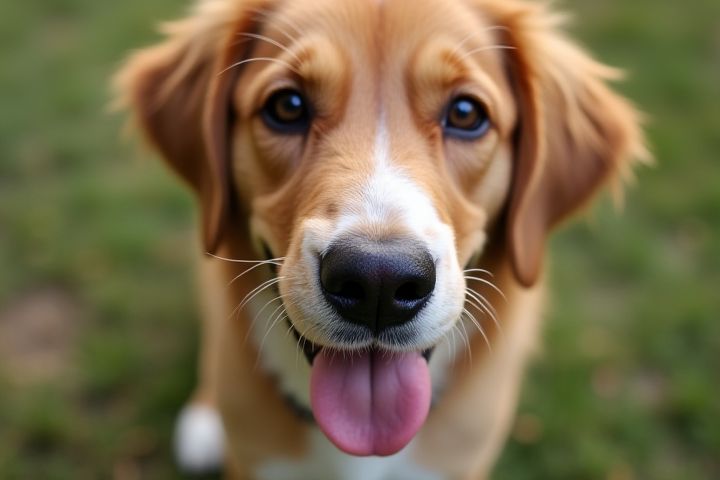
To successfully house train your dog, establish a consistent routine that includes regular feeding and frequent bathroom breaks. Choose a designated area outside for your dog to relieve itself, allowing it to associate this spot with bathroom duties. Use positive reinforcement, such as treats and praise, immediately after your dog eliminates in the correct location. Observe your dog's behavior for signs that it needs to go outside, such as sniffing or circling. Patience and consistency are key in making your training effective, transforming your puppy into a well-behaved companion.
How To House Break A Dog
Consistency in routine
Establishing a consistent routine is crucial for successful housebreaking of your dog. Set specific times for feeding, walking, and bathroom breaks to reinforce learning. Take your dog outside regularly, especially after meals or play sessions, and use a designated spot for elimination. Reward your dog with praise or treats immediately after they eliminate outside to create a positive association with the behavior.
Designated bathroom spot
Designating a specific bathroom spot for your dog can significantly simplify the housebreaking process. Choose an area in your yard that is easily accessible and consistently use this spot for bathroom breaks, reinforcing its purpose. When your dog eliminates in the designated area, reward them promptly with praise or treats to create a positive association. Over time, this will help your dog understand where they are expected to relieve themselves, improving your success rate in housebreaking and minimizing accidents indoors.
Positive reinforcement
Positive reinforcement involves rewarding your dog for desired behaviors to encourage consistent habits. Start by establishing a designated bathroom area outside, and take your dog there regularly, ideally after meals, upon waking, and after playtime. When your dog successfully relieves itself in the appropriate spot, immediately offer praise or a small treat to reinforce the behavior; aim for a consistent reward system to build a strong association. Patience is key; accidents may happen, but responding calmly and without punishment helps to maintain a trusting relationship as your dog learns the routine.
Supervision and observation
Supervision and observation are crucial in housebreaking your dog, as they allow you to monitor their behavior and recognize signs that they need to go outside. Pay close attention to cues like sniffing, circling, or whining, which often indicate that your dog is ready to relieve itself. You should set a consistent schedule for bathroom breaks, typically every two to four hours, especially after meals and naps, to create a routine they can follow. Consider using crates or confined spaces to help manage their movement when you cannot directly supervise, ensuring they have less opportunity to eliminate indoors.
Crate training
Crate training is an effective method for housebreaking your dog, utilizing the instinct of dogs to keep their sleeping area clean. Start by selecting a crate that is appropriately sized for your dog, offering enough space to stand, turn around, and lie down, but not so large that they can use one corner as a bathroom. Establish a consistent schedule, taking your dog outside every 1-2 hours, especially after meals, playtime, and waking up, to encourage them to associate the crate with their safe space and reinforce good bathroom habits. Reward your dog with praise or treats immediately after they eliminate outside, creating a positive association and helping them understand the importance of going potty outdoors.
Scheduled feeding times
Establishing scheduled feeding times is crucial for effectively housebreaking your dog. By consistently feeding your dog at the same times each day, you can predict when they are likely to need to go outside. Puppies typically need to relieve themselves after eating, within 15 to 30 minutes after meals. This routine not only encourages bowel regularity but also helps you to reinforce positive elimination behavior by taking them outside immediately after feeding.
Recognizing signs of needing to go
Recognizing the signs that your dog needs to go outside is essential for effective house training. Look for behaviors such as circling, sniffing the ground intently, whining, or pacing, which often indicate that your dog is searching for a suitable spot to relieve itself. New puppies may also increase their urgency, rotating in a tight area before needing to go. Responding promptly to these signals will help reinforce positive bathroom habits and strengthen your bond with your pet.
Patience and persistence
Housebreaking a dog requires consistent patience and persistence to achieve lasting results. Establish a regular schedule for feeding, bathroom breaks, and playtime, which typically involves taking your dog outside every 1-2 hours, especially after meals or waking. Utilize positive reinforcement by rewarding your dog with treats and praise when they eliminate outside, reinforcing the desired behavior. Over time, remain patient as your dog learns; it may take several weeks for them to fully understand where it is acceptable to relieve themselves.
Avoiding punishment
To housebreak your dog effectively, focus on positive reinforcement techniques rather than punishment. When your dog eliminates outside, immediately reward them with treats or praise, reinforcing the desired behavior. Establish a consistent schedule, taking your dog out at regular intervals--typically every 2 to 3 hours, especially after meals, playtime, or naps. If your dog has an accident indoors, calmly clean the mess without scolding; this helps them learn without fear or confusion.
Gradual increase in freedom
Begin housebreaking your dog by establishing a consistent routine for feeding and potty breaks, typically every 2-3 hours. Use a designated area outside for bathroom needs, rewarding your dog with treats and praise immediately after they go. Gradually increase their freedom within your home as they demonstrate good behavior, allowing access to more rooms after two consecutive weeks of reliable potty habits. Monitor any signs of distress, as you can adjust the schedule or revert to more confined spaces if accidents happen.
